Businesses are constantly looking for new ways to acquire new customers but, with customers getting savvier, this becomes an even bigger challenge.
Consumers like to know what value they are getting before making a purchase decision, which is why our product is one of the best ways to generate leads. This go-to-market strategy is called PLG.
But, what exactly is Product Led Growth?
Product led growth (PLG) is a business strategy where product usage serves as the primary driver of user acquisition, conversion and expansion.
PLG is employed by many of the fastest growing software companies including standout public companies:

“Grab your free 14-day trial,” and “Gain free access”: They’re two call-to-action phrases that we find in most SaaS websites.
Each one has its advantages, but what would be the best strategy for our business? Well, before making a decision that yes, it is very important, we need to consider some aspects:
- What is the difference between a free trial and a freemium?
- Your business
- Your market
- Your product
What’s the difference between a free trial and freemium?
Free Trial
By definition, a free trial is a customer acquisition model that provides a partial or complete product to prospects free of charge for a limited time.
Some free trials require a credit card in order to activate the trial. In these cases, typically the credit card is charged at the end of the trial period unless the user proactively cancels.
In instances where a credit card is not needed in order to activate a free trial, the user simply loses access to the product, all of its features, and any data accrued as a result of their trial period.
Freemium
A freemium model is a customer acquisition model where the user has free access to a limited version of the software product free of charge, without a time limit. If and when the user needs a higher volume of usage, they can upgrade.
In a successful freemium model, millions will use the application, and a few will love it so much, they pay for more.
In both models, it’s common practice to require information like email and company name before letting users get started. This information allows you to identify high-value segments, and to re-target and re-engage users outside the product.
But requiring a credit card is considered old hat—freemium and free trial businesses only do so 4% and 12% of the time, respectively.
Which approach is better?
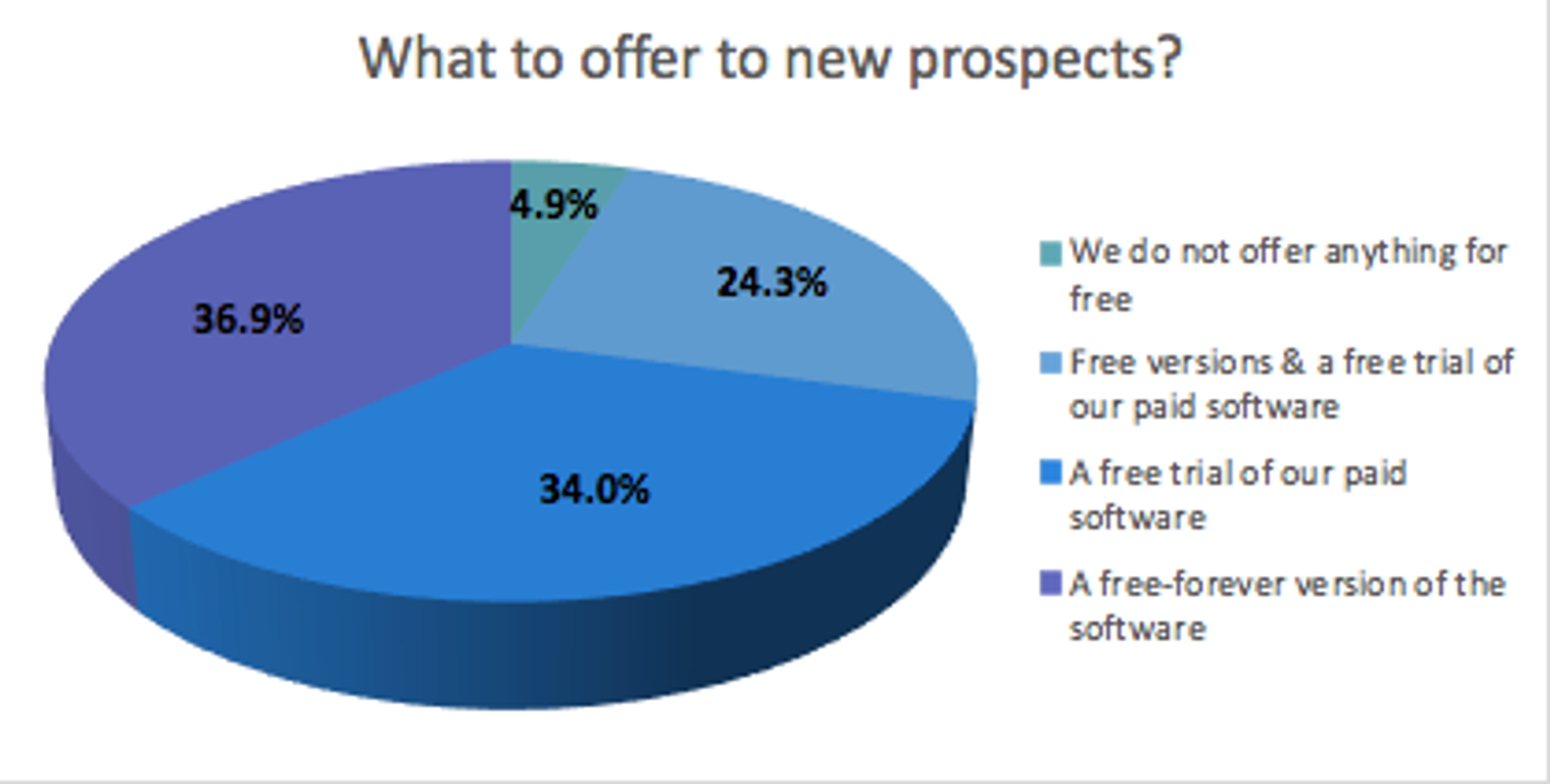
To determine which approach is best for our company, it is essential first of all to know in detail what our product and its features are, and going a little further we must be clear about what type of company we have and what market we are targeting.
The questions below can be very helpful and become a guide for exploring our product. You can also take a look at the graphs taken from different surveys made to 70+ SaaS companies, and learn more about the competition and their products.
Your business:
- Who are you selling to?
- What are your goals?
Your market:
- What is the network effect in your market?
- How big is your market?
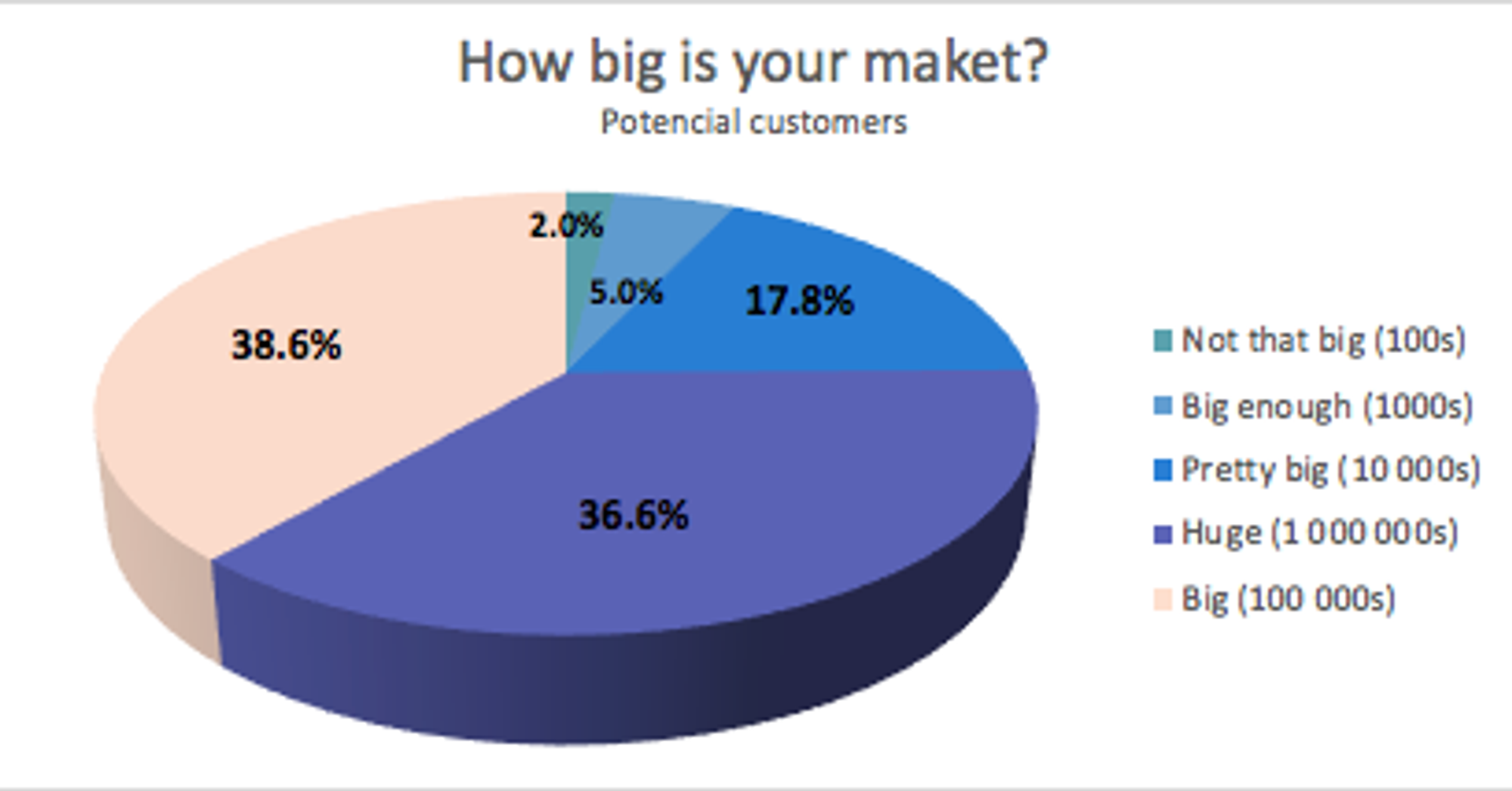
- How mature is your market?
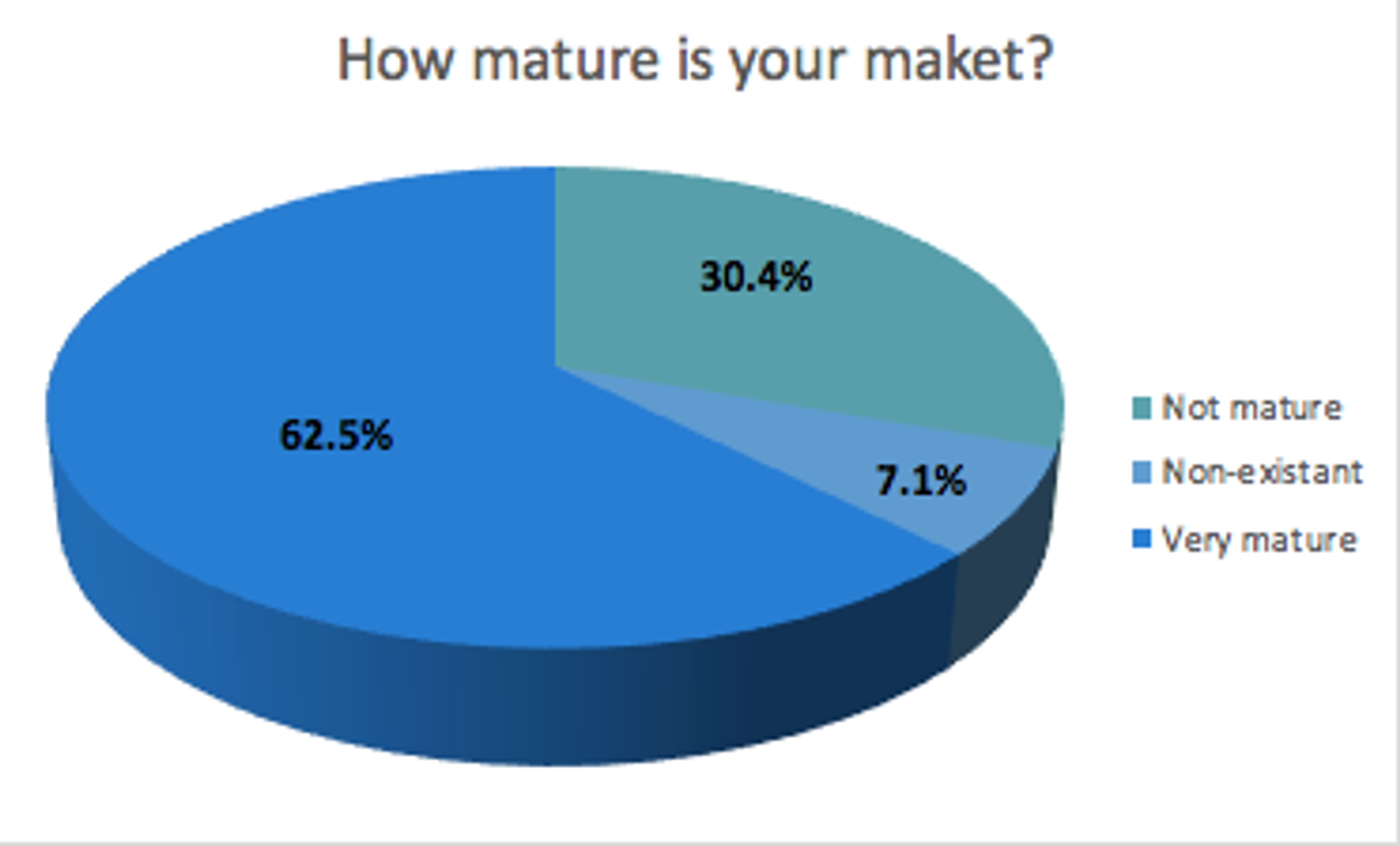
Your product:
- How much do you know about your product?
- How expensive is your product?
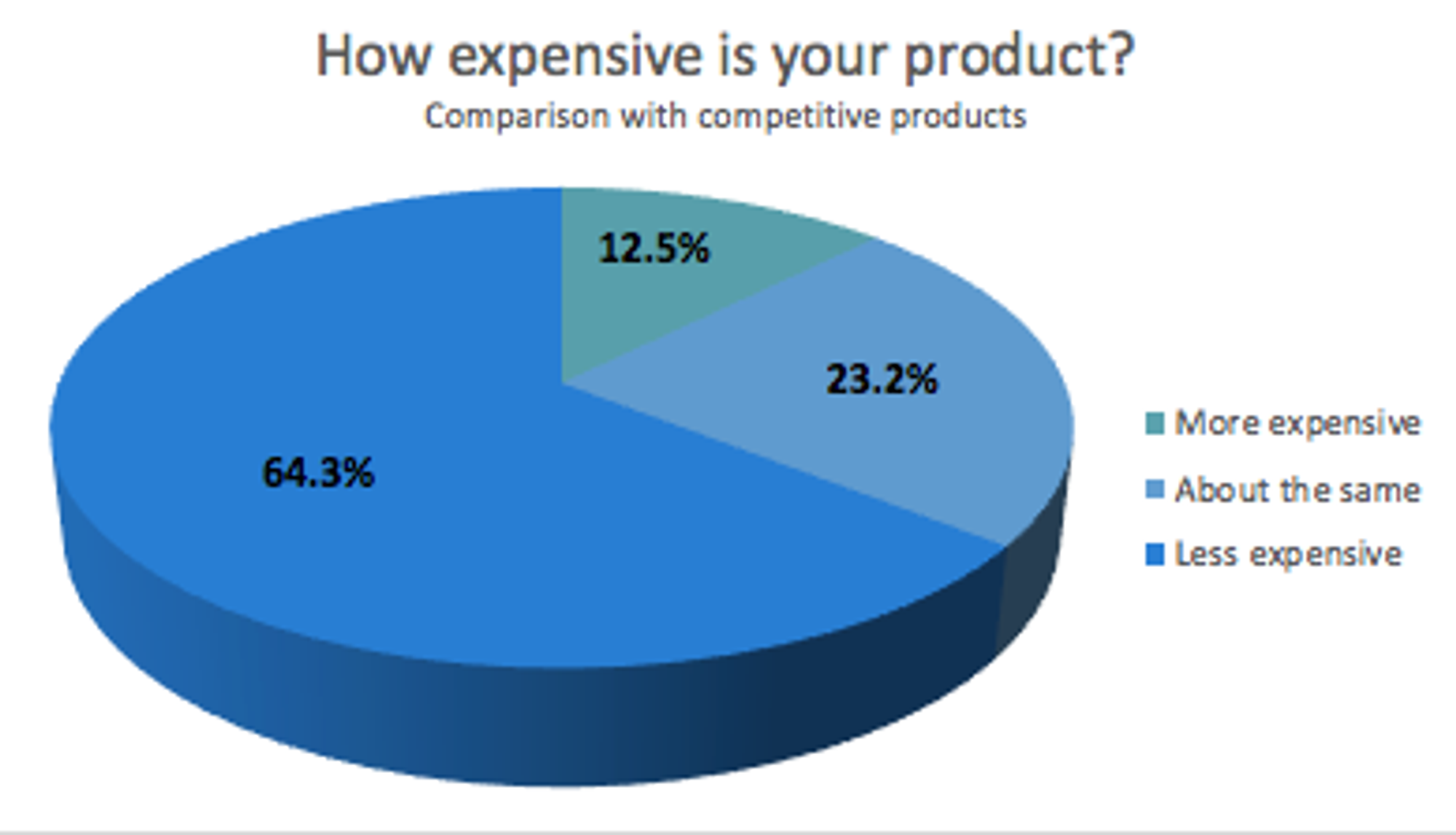
- Is your product easy to use?
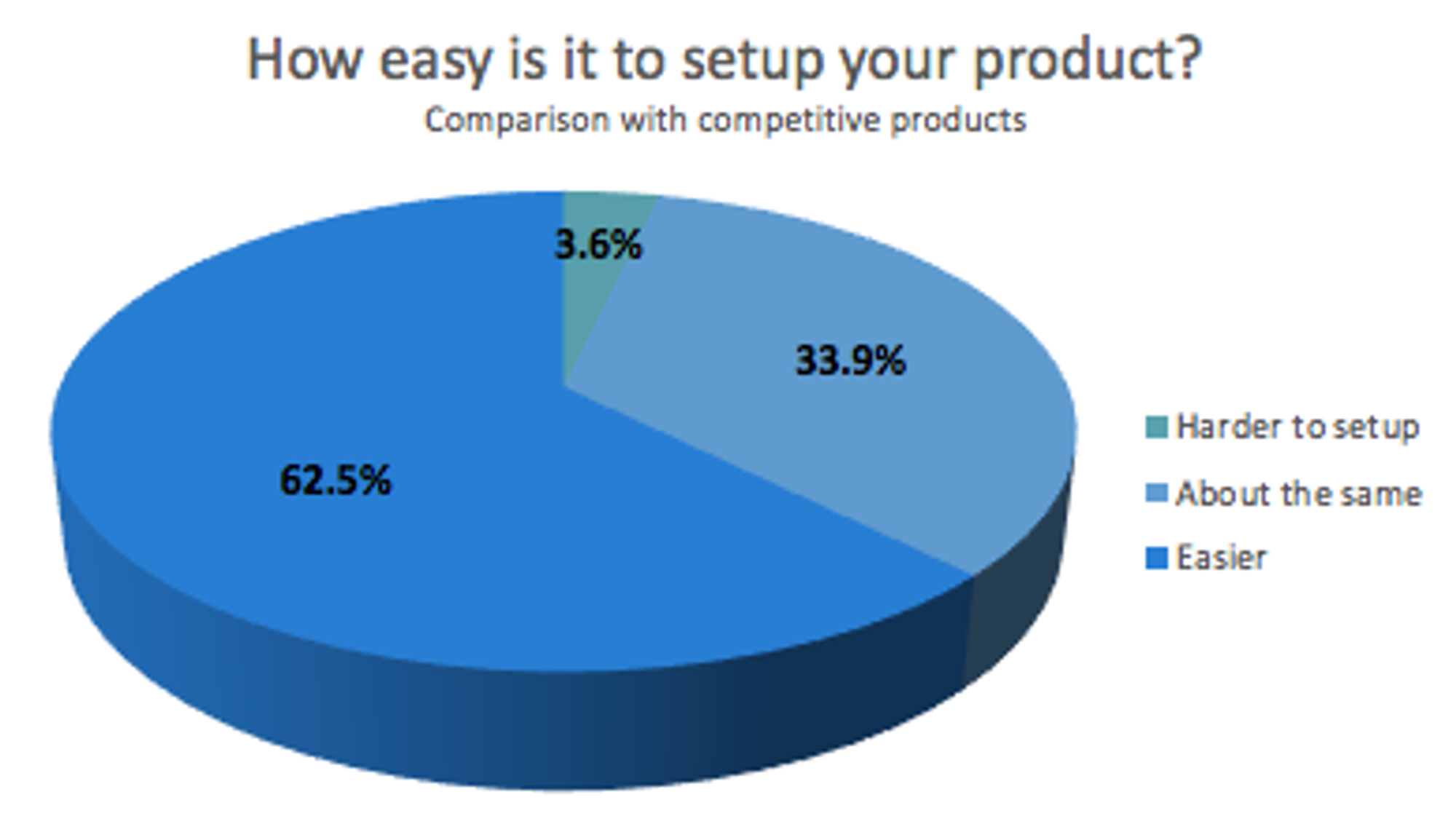
When does freemium work?
You should use the freemium model when:
When your main goal is brand awareness
If you’re working on a new piece of software, freemium access is a great way to drive brand awareness. People are more likely to sign up to something if it’s free, which positions your tool in front of more people.
To boost virality and maximize the exposure of our brand is a good reason to use a freemium product.
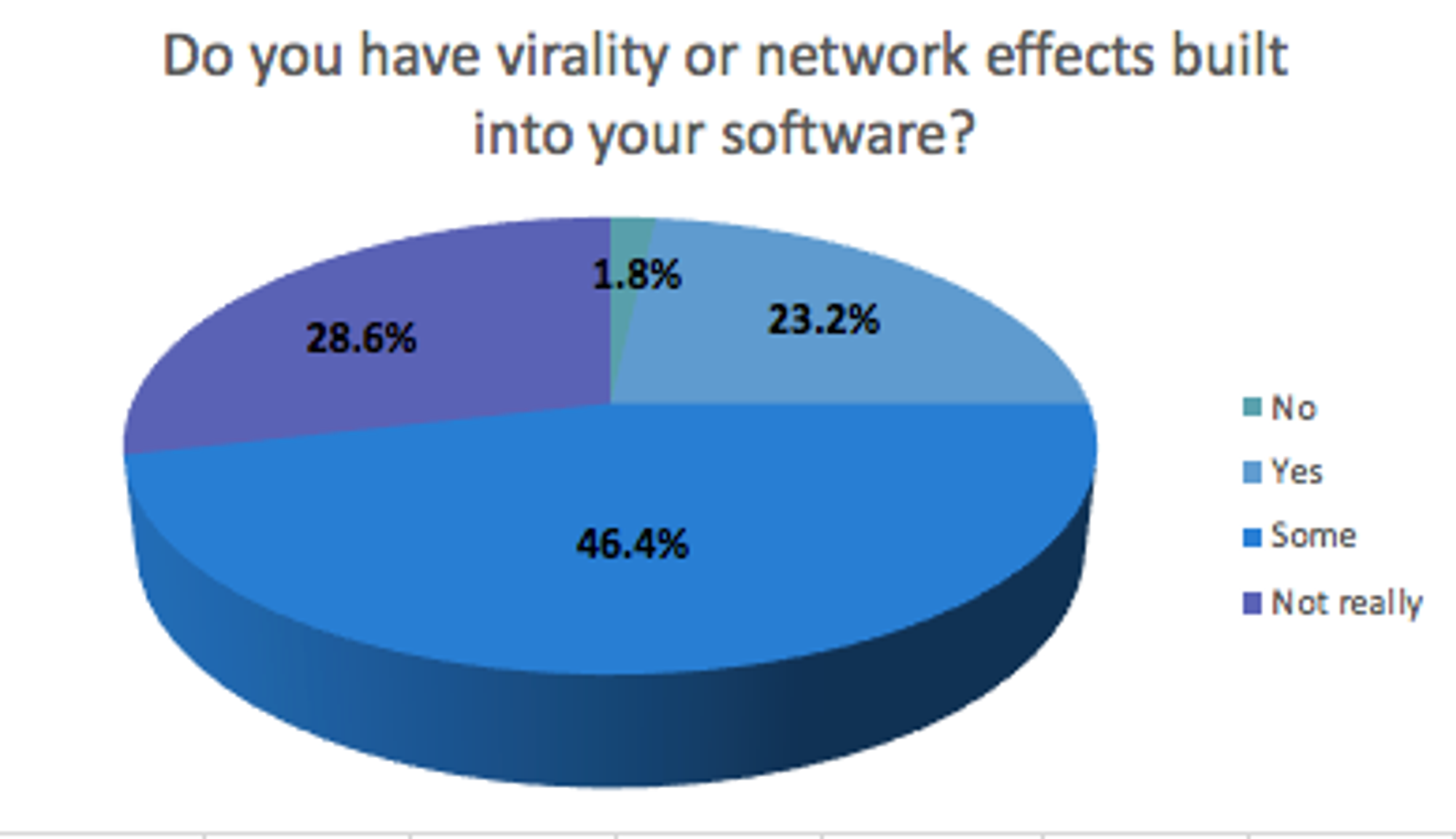
Typical freemium tools generate 33% more free accounts for every website visitor—which means that if you have a viral product that generates more value as more people use it, freemium is probably the correct strategy.
When you want to appeal to companies with a small (or lack of) budget
Many of our customers can find what they need in the freemium version of our software product.
Sometimes these customers want to scale their usage of the software to a premium version after reaching a certain level of success in their business, and that is where the premium plan makes sense.
Taking into account the market our product is aimed at, it is also important to know the type of end customer.
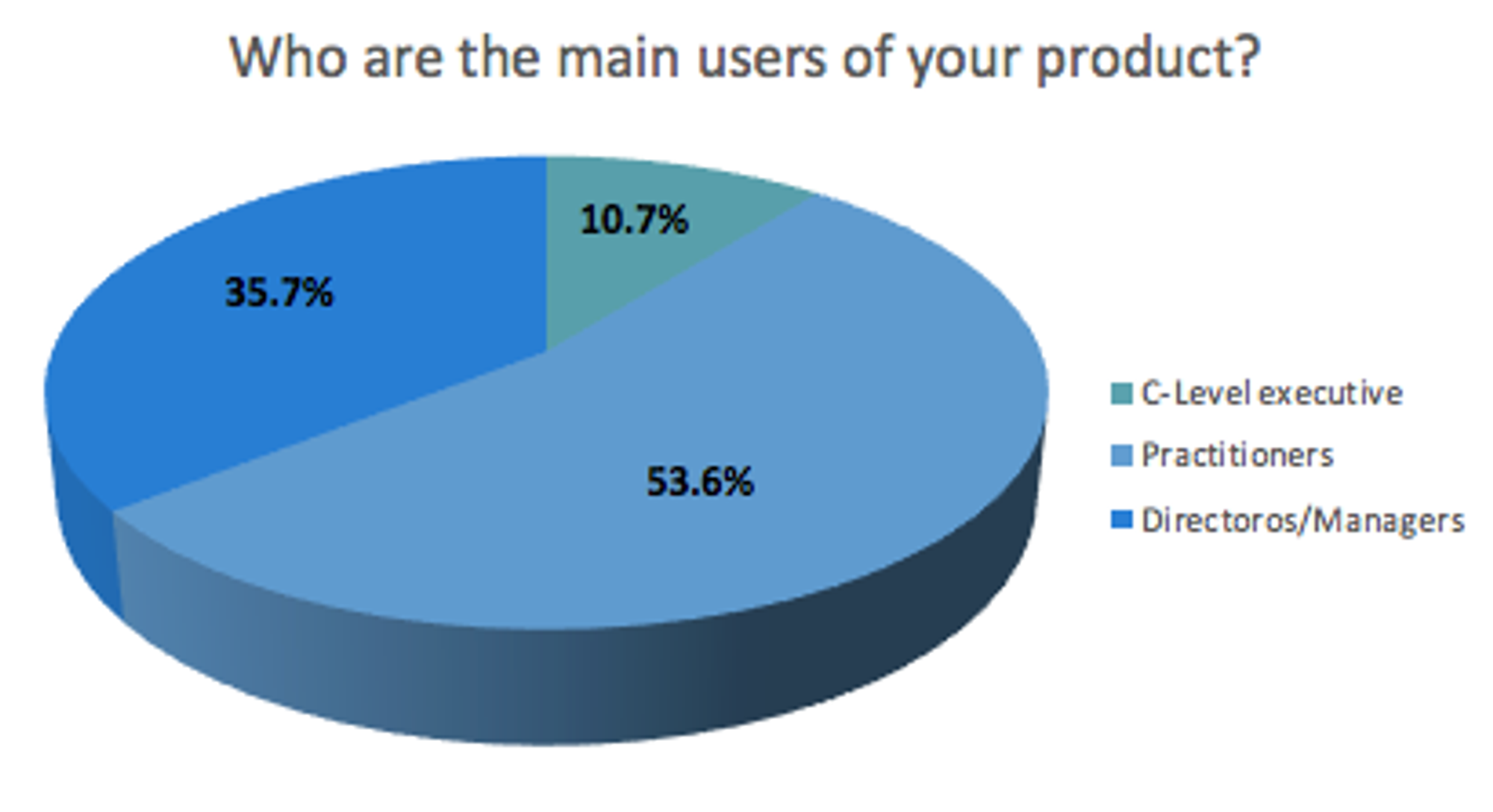
When your customers don’t see value within a specific timeframe
Smaller B2B sales cycles fall around 3 months, and it takes between 6 and 9 months, on average, to close a substantial B2B sale.
The freemium model offers a new way of hiring, in which the users have an opportunity to see and experience the product without having to go through procurement or make too many decisions. So instead of only offering an opportunity for a demo, freemium lets prospective customers explore the product on their own terms.
A freemium model eliminates the trouble of finding a suitable trial period.
When your Net Promoter Score needs to increase
An example of this case is the company Mind the Graph, it acquires visitors through blog content and Facebook Ads, and around 35% actually register for the freemium product. A little more remain receiving content and updates as nutrition leads.
The average NPS score is greater for companies with freemium products:
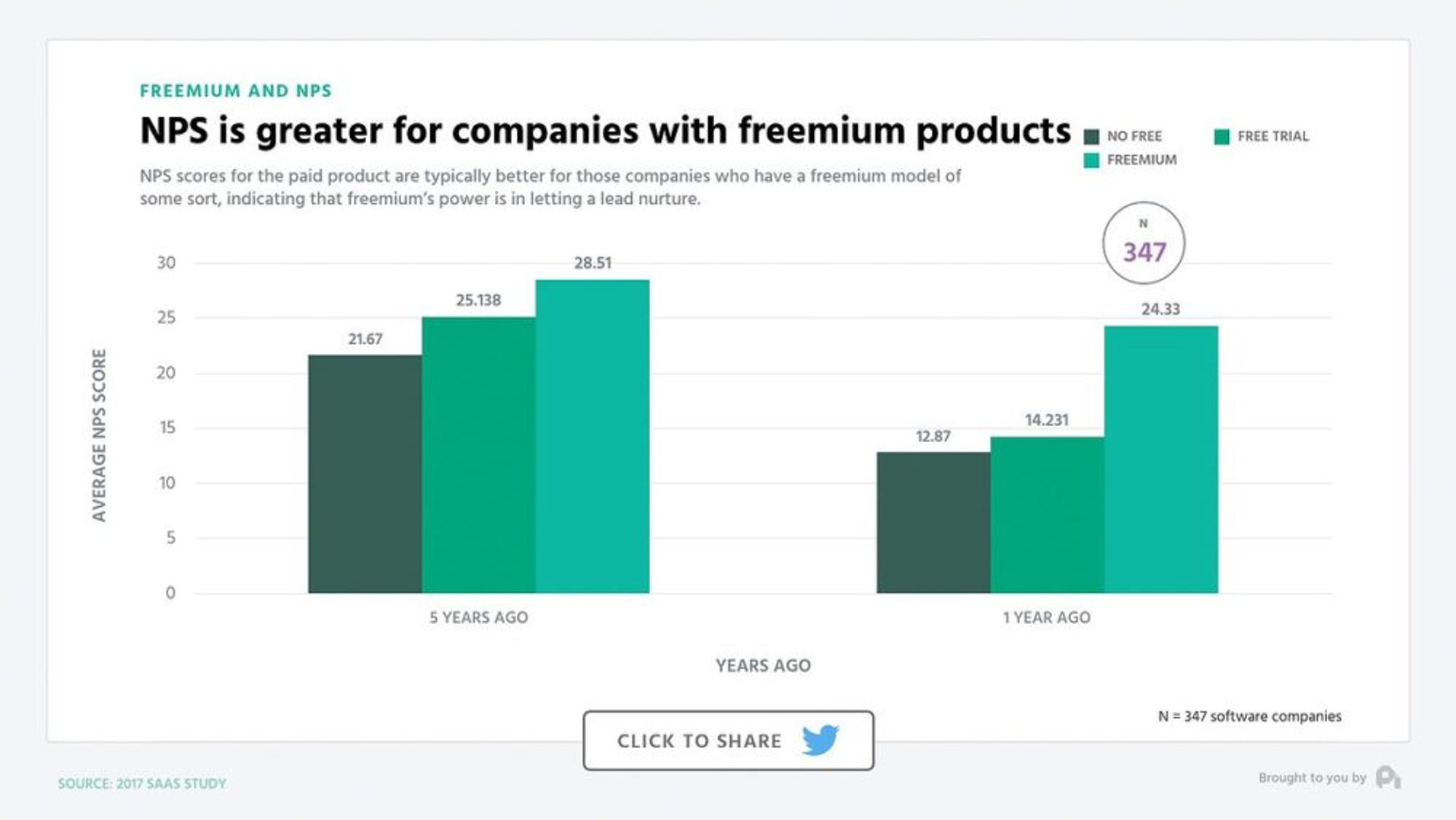
When does a free trial model work?
You should offer a free trial when:
When your business is laser-focused on maximizing paid conversion
Free trials create a sense of urgency, which can translate to more conversions. The median free-to-paid conversion rate for free trial products is roughly twice that of freemium products (approximately 14% versus 7%).
If your business is laser-focused on maximizing paid conversion and near-term revenue, a free trial is the way to go.
When you want to attract a small number of high-quality customers in a large market
“A free trial is best for tools that are relevant for a smaller set of people in a niche market that have some setup required,” says Ananta Adithya of Outgrow.
It’s also smart to consider the maturity of the market. If you’re one of the 37% of software experts working within a market that is either “not mature” or “non-existent,” your free trial can showcase the features you’re offering.
When your users are easily distracted or overwhelmed
Let's start from the fact that the average human being has an attention span of 8 seconds.
The free trial allows users to test the essential features of the product without being distracted by “bells and whistles”. During the trial, users have unrestricted access to the main features of the platform that they would normally use if they decide to subscribe to a premium plan.
When you want to give short-term value for long-term potential
It’s not uncommon for SaaS products to provide value to their users over a long period of time.
For several companies that employ the free trial strategy, one of the biggest selling points is that a test client immediately integrates their data sources and starts working with their data in real time. It would be difficult to understand the potency of the product without an integrated source. They need all of this short-term value to increase the long-term potential of their platforms.
This is the case for many companies that need time (more than 30 days) to demonstrate the full value of their products.
When your product has expensive running costs
In this particular case it is very important to remember that you don’t want your free trial to sacrifice profits. Your running costs need to be taken into consideration, along with the cost of your product in comparison to your competitors.
Extra Tip: When can freemium and free trial work together?
There’s no doubt that freemium and free trials are both superb models that work individually. But there would be the case for both a free trial and freemium model if:
When you need to gain lots of market share
The majority of SaaS companies offer one or the other because using both payment models could give you a competitive advantage.
In the case of the company that has developed Clockify, the freemium and free trial combination has meant around 50,000 new signups each month, according to Aleksandar Olic.
Likewise, many decide to combine the free trial model with freemium, because the latter is a really good boost from the marketing point of view.
When you have different customers that need different features
Not all of your customers need full access to your product.
Some users only need the basic invoicing and that is expected to be free. But top users expect more complicated features and they need to see how they work and that the product has all of them.
The combination roughly can result in 2x better conversion than Freemium and about 5x better than Premium only.
Improving conversion rates
The conversion rates between free trial and freemium really differ by how persistent you are, within your strategy, in messaging customers. The sales and support teams are a key piece at this point, because they have the responsibility to improve the outreach of companies to customers.
“Conversion rates increase as software companies add touch points with prospects—companies with 11+ touch points performed 2x higher than those with other sales and marketing cadences.”
Considering the cost and staff hours required for that level of outreach, freemium is much better when it comes to resource efficiency, freemium products convert customers 25% more often than free trials.
Final Thoughts
Let's do a quick analysis taking into account all the points that we have seen previously.
In this case we have 2 companies, one of them offers a freemium product and the other a self-serve free trial. Each companies will have a total of 1000 leads that if they entered the free trial or freemium funnel on a given day, would yield the following results:
A freemium model would convert 4 of the 1,000 leads to paid, with roughly 3 of those leads needing no additional outreach from the sales team.
- 60 free signups (6% conversion from a visit to the website)
- 4.2 paying customers (7% conversion from free)
- 2.6 of these are self-serve (of 62% conversion via self-serve)
On the other hand, with a free trial model, our example company would convert approximately 6 leads, half of whom would convert without talking to a salesperson.
- 45 free signups (4.5% conversion from a visit to the website)
- 6.3 paying customers (14% conversion from free)
- 2.8 of these are self-serve (of 45% conversion via self-serve)
In conclusion, as we have seen throughout this post, the selection of the best approach, between Freemium and Free Trial, not only depends on the type of product we offer and not only on the type of market we are targeting, but also on the objectives of our company.
In other words, the decision on what is better for our company, freemium or free trial, cannot be made from a single approach but from a deep analysis of all the aspects mentioned above.

